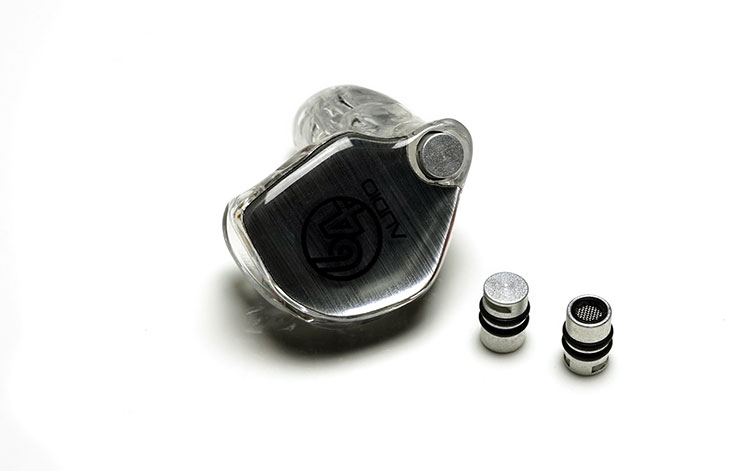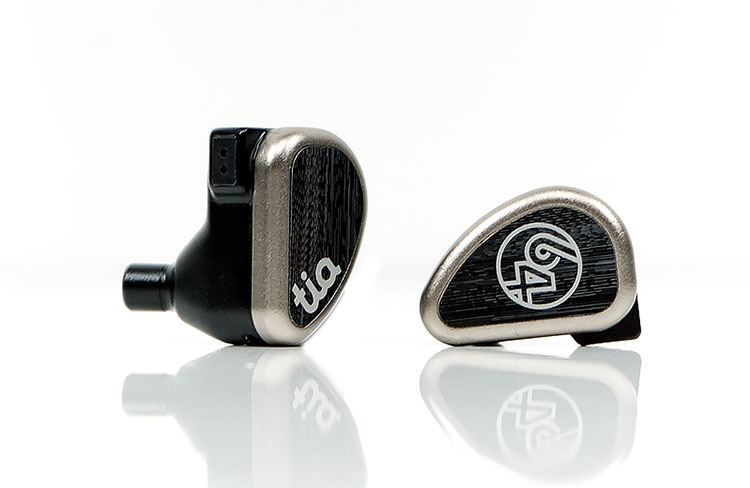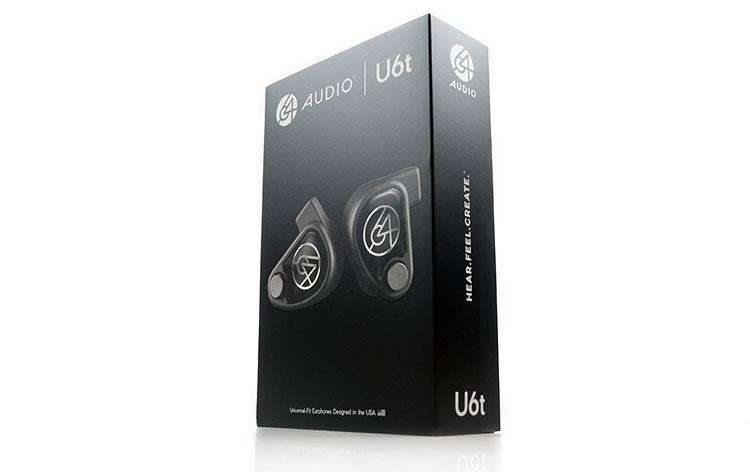Select Comparisons
All comparisons were done primarily with the m15 module and the Lotoo PAW Gold Touch as the standard referencing source.
64 Audio A6
Technical
The A6 was the original version of this 6-driver configuration launched back in late 2016/early 2017 and notable for not using any tia technology. That has not changed so both universal and custom formats both use the tia high driver.
The driver grouping, however, is unchanged for the new and old with 2 for the lows, 2 for the mids, 1 for the mid/highs, and 1 for the highs. Like the U6t, the A6 also uses an integrated passive crossover but 3-way instead of 4-way. For the A6t, this should be the exact same 4-way crossover as the U6t.
Two things to note from the late 2016 model, the A6 did not have LID or the full suite of the apex modules as standard. It only came with a choice of m15 or m20. However, the current A6t does have LID as well as the same selection of filters as the U6t.
In terms of specifications, the A6t and the U6t are the exact same at 10Ω and 108dB SPL though the older A6 is more efficient at 122 dB SPL but with a higher load of 22Ω.
Design
The A6 I have here is a custom format so the direct comparison is more challenging. Suffice it to say the wearing experience is very different also since the custom version of the U6t does an excellent job in terms of passive isolation given its precise fitting. I always recommend going for customs where you can unless a resale is a big concern.
If you do want something a little more compact and sturdier then the universal u6t has its obvious advantages being made of tougher aluminum compared to the 3D acrylic build of the A6t.
Both will fit all the filters though so you can technically have both and one set of filters and one cable and share between the two if you decide to go down that route.
One thing to note, the older A6 cable was a poor high-resistance P1 4-wire OFC if memory serves me right. We have come a long way since then with the new 26AWG exclusive Premium Cable on the new U6t.
Performance
It is really all about the mids imaging and air in terms of major differences between these two with 64 Audio changing the U6t FR to fix an Achilles heel of the original non-tia A6.
We have now gone from a mildly L-shaped response with a subdued midrange and not a huge amount of treble presence to a classic U-shaped bass to mids curve, a forward upper mids, and a little tweak around 9-10k for some mild sparkle.
The core easy-going sound signature is still there but now the harmonic balance is hugely improved, sounding less rounded and more vivid, especially with female vocals. There is also more of a cut in the lower mids on the U6t so bass-to-mids separation sounds much better.
With the original A6, the bass response was similarly lifted sub-100Hz but its quantity and presence below 50Hz are not as convincing as the U6t’s performance.
It also has more of a slow fall to 1-2k so every aspect before is marginally higher. That brings a lot of warmth and even-harmonic dominance into the sound signature and forward imaging experience sub-1k.
With the U6t, the lower-mids rate is more dipped with instrumental timbre offering slightly less note weight but with much-improved space and clarity. Combined with the forward upper mids, higher-register vocals have more presence and space to grab your attention.
64 Audio Nio
$1699
Technical
The 64 Audio Nio is a hybrid universal-fit monitor featuring a 9mm dynamic driver and 8 balanced armature drivers.
As you would expect, the Nio driver grouping is quite different with the single DD covering the lows, 6 BA for the mids, 1 BA for the high-mids, and one tia BA for the highs though both do use that integrated 4-way passive crossover.
Like the U6t, the Nio also uses the apex module system and LID technology. The choice of filters is the same as the U6t and you get them all inside the retail package as accessories.
The Nio also has a very low load rating at just 6Ω @1kHz but a moderate level of efficiency for SPL at 105dB. The A6 does have a slightly higher load of 10Ω but in terms of SPL, it is a little more efficient at 108dB.
Design
These two monitors have exactly the same form factor, aluminum shell material, and 2-pin connector technology with the apex module system in the same corner of the faceplates.
The dimensions are also very similar though the Nio feels slightly heavier courtesy of more drivers inside that shell.
What does stand out though is the difference in finishing and the cable options. I personally love that striking blue of the Abalone plates on the Nio but I prefer the matte-finished shells and ‘togetherness’ of the U6t design.
The chrome fenders, the polished black shells, and the Abalone plates collage on the Nio do not feel quite as harmonious as the U6t black-on-grey design.
The Nio does not come with the new larger 26AWG SPC exclusive Premium Cable that is included with the U6t. Instead, you get the regular more resistive 28AWG SPC Premium cable so the performance there will not be quite as good.
I tend to roll with the Nio using a silver cable to flesh out the highs a bit more such as the GramsAudio Cadence Silver Plus which is a monster of a 24AWG cable for just over $200.
Performance
Both of these IEMs are aiming for the same ‘soothing’ or easy listening experience but you can hear that dynamic driver difference right away in the Nio compared to the BA low-end of the U6t.
To be fair, the elevation and layering of both bass curves are excellent, especially so for the U6t which does very well to avoid that traditionally dry shall and polite BA bass signature.
However, the DD inside the Nio has a better sub-bass texture, weight, and a slightly slower decay. When it tickles the very bottom of any bass passage you can pick it out really well.
The U6t will give you weight also, but the definition is slightly softer sub-50Hz, not as well defined as the dynamic driver inside the Nio. It pulls up marginally faster also in terms of decay which some might actually prefer.
The mids are also a little more relaxed on the Nio compared to the U6t. The Nio curve is a gently upwards curve from 1-5k whereas the U6t is more aggressive, shooting up from 1-2k and staying elevated right up to 5k.
Vocals image further forward on the U6t as a result and sound a little more physical as well. The Nio isn’t recessed but just more neutral, with slightly cleaner timbre, and more pure sounding for my money.
Both offer a relaxed but clear treble with that tia high doing very well in terms of headroom but for me, the Nio just has a little bit more energy around the 7k area and 10-11k to a lesser extent.
Staging is a little more expansive and deeper sounding on the Nio whereas the U6t is more mid-forward, comparatively more intimate but still with above-average depth.
64 Audio tia Trio
$2299
Technical
We are going up the ladder a bit with the tia Trio but with just 3 drivers, one being a single dynamic and also one of my favorite reference monitors for review testing I thought it would be nice to see what kind of gap we have if any.
Inside, the hybrid triple driver tia Trio uses a 1 tia high, 1 high-mid, 1 back-vented 10mm dynamic driver for the mids and lows with an integrated 3-way passive crossover.
That compares to the all BA configuration of the 6 driver Ut6 with 2 for the lows, 2 for the mids, and 1 for the mid/highs. Like the tia Trio, the U6t also uses a single tia high but with an integrated 4-way passive crossover.
Both IEMs use the apex filter system as well as LID so neither should have any issues with impedance mismatches on certain DAPs or amplifiers.
In terms of specs, the tia Trio is rated at 5.5 +.5/-1.5 Ω and 105 dB SPL which is a lower load than the 10Ω for the U6t and slightly less efficient for current compared to the U6t’s 108 dB rating. Not surprising since dynamic drivers can often drag those numbers down.
Design
The aesthetic of the tia Trio is a little more Nio than U6t. You could argue that it is a little more conservative but still quite tasteful with its shiner black shell as opposed to the U6t dark grey and that two-tone silver fender and a lightly brushed charcoal/black central faceplate design.
In some ways, the U6t follows that same understated manner with its dark grey on black but the nuanced reflective black glossy faceplate and matching grey fender give it a more ‘complete look’ than the tia Trio
The tia trio, courtesy of just 3 drivers as opposed to 6 is the smaller of the two monitors despite sharing the same form factor and is marginally a comfier fit in the ear as a result. The driver venting also does not create much of a passive isolation gap between the two when using similar supplied tips such as the foams.
Both use a 2-pin connector but the tia Trio uses the standard 28AWG SPC Premium cable which will not be quite the same level as the new 26AWG exclusive Premium cable that comes with the U6t.
Performance
The immediate impression of the tia Trio is of a monitor that has a taller and slightly deeper sound compared to the U6t with a bit more resolution and articulation in treble giving the tia Trio an altogether airier but brighter sound signature.
On the low end, it is really a case of dynamic versus BA with those different textures and timbre. The tia Trio’s larger dynamic driver reaches deep, sounds very natural, and is beautifully defined.
The U6t sounds big on the lows also, and has plenty of amplitude and good reach but right at the bottom, it sounds softer, slightly more diffuse, and shorter on the decay.
The tia Trio bass-to-mids dip happens a little earlier, (save for a small 5006-00Hz bump), so the bass-to-mids separation is stronger. You get more of a sub-bass hit and slightly less 100Hz mid-bass whereas the U6t is generally a bit warmer and denser from 100Hz to 500Hz.
Now where the U6t does well is in the upper mids, especially for those who might be a little treble-shy and want something more forgiving.
It does not have the same level of separation as the tia Trio but that mid-forward performance can sound smoother and more euphonic to my ears. This tuning may suit higher pitching vocal performances a bit more for longer listening sessions compared to the cleaner more energetic tia Trio mid-highs.
The tia Trio definitely can sound more articulate and resolving in the mids to high as well as more spacious sounding in terms of staging. However, it is edgier for harmonics, so it can sound a bit brighter for vocal and percussion timbre.
Our Verdict
Whilst not the ultimate in terms of resolution, the U6t is a substantial upgrade over the original A6 I reviewed back in 2016. It has a very likable and easy-to-pair sound signature that plays well with modern rock and pop.
The dual BA configuration on the low end is far more physical and natural sounding than I expected it to be and the harmonic balance for vocals is spot on for easy listening.
Its only weakness would be the level of resolution and soundstage expansiveness but then again a lot of people like their music more to the intimate side, especially for vocals.
The switch to a better-performing larger AWG cable also appeals to me. Considering both the more expensive Nio and tia Trio come with the more resistive Premium cable that is indeed good value.
I hesitate to say it when the U6t costs a bit over $1k but this is a great everyday carry and plays very well with just about any vocal-centric genre you throw at it. The fact it can be easily driven by most DAPs makes it all the more appealing. Very little to fault here.
64 Audio U6t Specifications
- Driver Type/Count Six precision balanced armature drivers
- Driver Configuration 1 tia high, 1 hi-mid, 2 mid, 2 low
- Frequency Response 10Hz – 20kHz
- Sensitivity 108 dB/mW
- Impedance 10Ω Nominal
- Crossover Integrated 4-way passive crossover
- Isolation -20dB with m20 apex module





